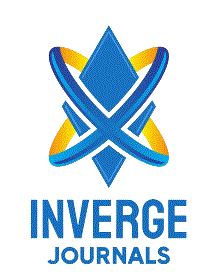Communication Ecology during Pandemic COVID-19: Challenges and their Mitigation of Journalists from Gilgit Baltistan
DOI:
https://doi.org/10.63544/ijss.v1i2.165Keywords:
Corona Virus, Crisis Communication, COVID-19 Communication Ecology, Disaster CommunicationAbstract
The COVID-19 pandemic has wracked the globe with fear and confusion and posed great threats to health system all over the world. A wave of misinformation, rumours, fakes news and hoaxes have also flooded through various media platforms, creating fear and confusion in general public. Global communication was drastically altered by the COVID-19 epidemic, which presented journalists with hitherto unheard-of difficulties, especially in isolated and underdeveloped areas like Pakistan's Gilgit-Baltistan. The misinformation about COVID-19 makes vulnerable people of rural and remote communities like Gilgit-Baltisatn even more vulnerable due to poor healthcare facilities and less or no reliable information about precautionary measures owing to poor internet connectivity and electronic media coverage. With an emphasis on how journalists in Gilgit-Baltistan managed the disturbed information landscape, this study investigates the idea of communication ecology during the pandemic. During disasters and health emergencies, local journalists play a vital role in communicating to general public regarding emergency situation, so this study will evaluate perception of local journalists in Gilgit-Baltistan regarding reporting practices adopted during Pandemic COVID-19 and how they conceptualize and covers news about corona virus and face challenges in reporting and covering health emergency. The study highlights the main obstacles that journalists must overcome, such as a lack of trustworthy information, inadequate internet infrastructure, governmental regulations, and psychological strain. Furthermore this study aims to examine the mitigation of challenges which local journalists from Gilgit Baltistan has been faced during pandemic.
References
Agha, S., & Demeter, M. (2022). ‘No difference between journalism and suicide’: Challenges for journalists covering conflict in Balochistan. Shaheed Zulfikar Ali Bhutto Institute of Science and Technology. https://oric.smiu.edu.pk/images/No-difference.pdf
Ashraf, S. I. (2021). The dark side of news fixing: The culture and political economy of global media in Pakistan and Afghanistan. Anthem Press.
Asif, F. A. (2017). Healthcare challenges in Gilgit Baltistan: The way forward. Pakistan Journal of Applied Economics, 27(2), 247–264.
Broad, G. M., Ball-Rokeach, S. J., Ognyanova, K., Stokes, B., Picasso, T., & Villanueva, G. (2013). Understanding communication ecologies to bridge communication research and community action. Journal of Applied Communication Research, 41(4), 325–345. https://doi.org/10.1080/00909882.2013.844848
Committee to Protect Journalists. (2018). Acts of intimidation: In Pakistan, journalists’ fear and censorship grow even as fatal violence declines. https://cpj.org/x/73ff
Committee to Protect Journalists. (2019, December 18). Drop in journalist killings in Pakistan masks decline in press freedom [Media release]. https://cpj.org/2019/12/drop-in-journalist-killings-in-pakistan-masks-declin/
Deuze, M. (2005). What is journalism? Professional identity and ideology of journalists reconsidered. Journalism, 6(4), 442–464. https://doi.org/10.1177/1464884905056815
Houston, J. B., Hawthorne, J., Perreault, M. F., Park, E. H., Goldstein Hode, M., Halliwell, M. R., Turner McGowen, S. E., Davis, R., Vaid, S., McElderry, J. A., & Griffith, S. A. (2015). Social media and disasters: A functional framework for social media use in disaster planning, response, and research. Disasters, 39(1), 1–22. https://doi.org/10.1111/disa.12092
Idrees, S. C. (2022). Are there barriers to community participation in tourism development: A study of Gilgit-Baltistan [Master's thesis, Pakistan Institute of Development Economics]. https://file-thesis.pide.org.pk/pdf/mphil-business-economics-2019-ch-shafqat-idrees--are-there-barriers-to-community-participation-in-tourism-development-a-study-of-gilgit-baltistan.pdf
International Federation of Journalists. (2022). South Asia Press Freedom Report. http://samsn.ifj.org/SAPFR21-22/537-2
Jamil, S. (2017). Safety threats, impunity and professionalism: Journalists’ dilemma in Pakistan. Journal of Sociology and Anthropology, 6(4), 571–578. https://doi.org/10.13189/saj.2017.050402
Khan, B. (2020, May 28). Pakistan: Unsafe health reporting amid Covid-19. International Federation of Journalists. https://www.ifj.org/media-centre/blog/detail/category/asia-pacific/article/unsafe-health-reporting-amid-covid-19
Maron, B. J. (2008). Medical data, the media, and distortion of the facts in the internet era. The American Journal of Cardiology, 101(6), 890–891. https://doi.org/10.1016/j.amjcard.2007.11.055
Niblock, S. (2020). Towards a psychosemiotics of journalism, mental distress and COVID-19. Social Semiotics, 33(1), 243–248. https://doi.org/10.1080/10350330.2020.1810555
Nigar, N. (2018). Ecotourism for sustainable development in Gilgit-Baltistan. Pakistan Journal of Social Sciences, 38(2), 531-540. https://www.jstor.org/stable/48539385
Perreault, M. F., Houston, J. B., & Wilkins, L. (2014). Does scary matter? Testing the effectiveness of new National Weather Service tornado warning messages. Communication Studies, 65(5), 484–499. https://doi.org/10.1080/10510974.2014.956942
Posetti, J., Bell, E., & Brown, P. (2022). Journalism & the pandemic: A global snapshot of impacts. International Center for Journalists. https://www.icfj.org/sites/default/files/2020-10/Journalism%20and%20the%20Pandemic%20Project%20Report%201%202020_FINAL.pdf
Pratav, A. (2021, October 18). How the COVID pandemic changed digital journalism. The Conversation. https://theconversation.com/how-the-covid-pandemic-changed-digital-journalism-172039
Press Emblem Campaign. (2022). Countries with the most COVID-19 related journalist deaths. https://pressemblem.ch/-1.shtml
Salam, A. (2020). Journalism in the age of COVID-19: Perspectives from Pakistan. Friedrich-Ebert-Stiftung Pakistan. https://library.fes.de/pdf-files/bueros/pakistan/17234.pdf
Shah, S. F. A. (2018). Health is an Achoot beat: Factors influencing Pakistani journalists’ coverage of polio vaccination [Doctoral dissertation, University of New Mexico]. UNM Digital Repository. https://digitalrepository.unm.edu/cj_etds/113
Shah, S. F. A., Ginossar, T., & Ittefaq, M. (2021). ‘We always report under pressure’: Professionalism and journalistic identity among regional journalists in a conflict zone. Journalism, 24(4), 719–728. https://doi.org/10.1177/14648849211060628
United Nations. (2020). COVID-19: An unprecedented news story for journalists. https://www.un.org/en/coronavirus/covid-19-journalists-biggest-story-their-lifetime
Waris, A., Atta, U. K., Ali, M., Asmat, A., & Baset, A. (2020). COVID-19 outbreak: Current scenario of Pakistan. New Microbes and New Infections, 35, Article 100681. https://doi.org/10.1016/j.nmni.2020.100681
Weaver, D. H., & Willnat, L. (2016). Changes in U.S. journalism: How do journalists think about social media? Journalism Practice, 10(7), 844–855. https://doi.org/10.1080/17512786.2016.1171162
World Health Organization. (2021, February 25). WHO expands country office presence to Gilgit Baltistan. https://www.emro.who.int/pak/pakistan-news/who-expands-country-office-presence-to-gilgit-baltistan.html
Downloads
Published
How to Cite
Issue
Section
Categories
License
Copyright (c) 2022 Attiya Iram

This work is licensed under a Creative Commons Attribution-NonCommercial-ShareAlike 4.0 International License.
The work is concurrently licensed under a Creative Commons Attribution-NonCommercial-ShareAlike 4.0 International License, which permits others to share the work with an acknowledgement of the authorship and the work's original publication in this journal, while the authors retain copyright and grant the journal the right of first publication.









